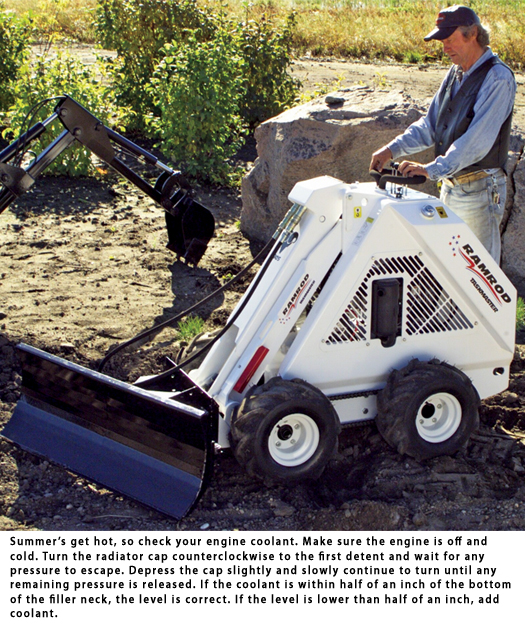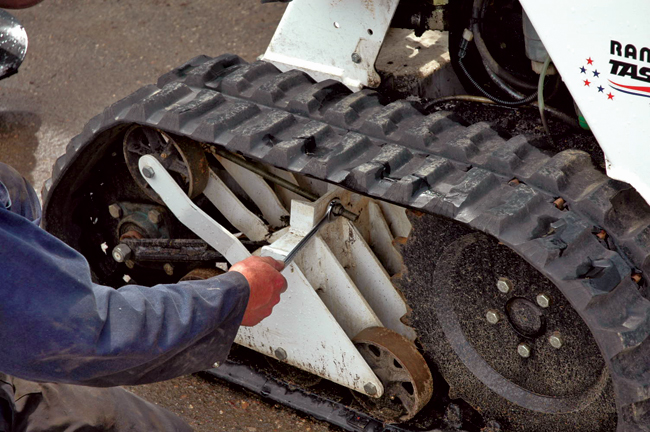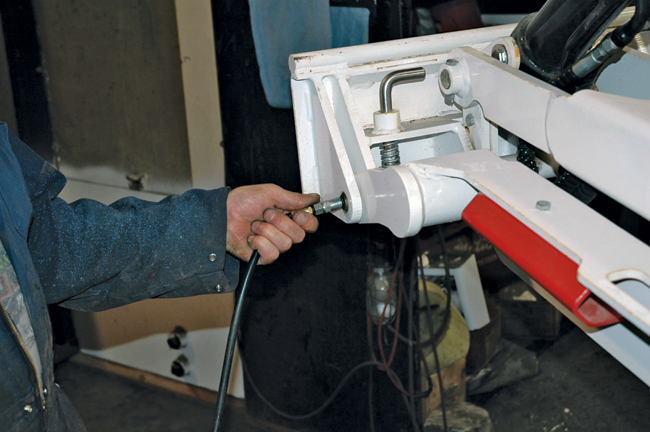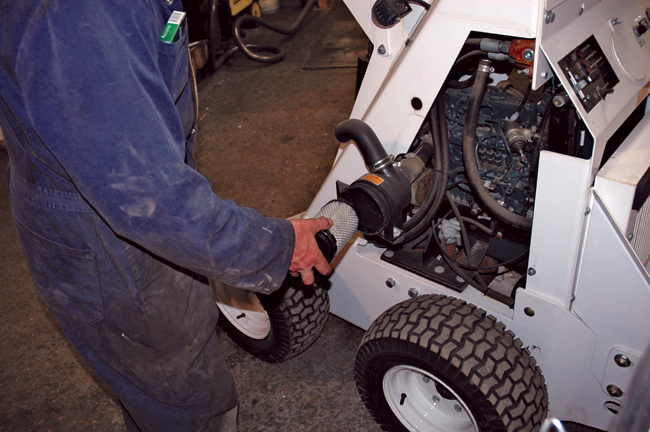TLC for Your CTC

Maintenance, attention to detail, vigilance, prudence and, hey, maybe even a little enthusiasm will keep your machines up and running and your crews rolling throughout the work season. Like most styles of hydraulic tool carriers (skid steers, mini excavators, telehandlers and the like), a compact tool carrier (CTC) is a complex system of parts and systems that needs thorough care and management to keep it running at peak efficiency. Overlooking things that need a little attention now usually leads to things that you can’t overlook later because they will need a lot of attention in the future (usually very expensive attention). If you follow these simple steps, you’ll keep your CTC in professional-grade shape for years to come.
1. Read the Operator’s Manual: The booklet that comes with every CTC machine contains the manufacturer’s clearly detailed instructions for maintaining their machine, and let’s face it, they know their machine best. They did engineer and build it, after all.
Things to do daily or every eight hours for those of you working overtime.
2. Check Your Primary Fluid Levels: It might seem redundant, but making sure you are “topped up” for fuel, engine oil and hydraulic fluid before starting work each day will keep you working more efficiently throughout the day.
3. Lubricate Internal Drive Chain(s): To maximize the effective life of your drive chain(s), lubricate every eight hours with a non-detergent mineral oil (10W30 motor oil works just fine). With oil’s uncanny ability to attract dust and debris, there’s little point in lubricating external drive chains, and the lubrication may make matters worse.
4. Check the Tires and Tracks: Inspect your wheels and undercarriage for signs of wear or damage. A simple visual inspection saves a lot of grief later on.
5. Clean and Check the Attachment Coupler: Of all the preventive maintenance that people should do with a CTC machine, this is probably the most overlooked. Your compact tool carrier makes you money and saves you time depending on the effectiveness of the attachments you use to get the job done. You need to make sure that all of the couplings and connectors are clean, secure and without damage; it’s essential to the effective operation of your attachments.
Things to do weekly or every 25 hours.
6. Regularly Grease: The cylinders, axle bearings, chains, linkages, cross shafts and pivots points need to be regularly greased. Anything with moving parts depends on the proper, consistent and continual application of lubrication to keep it working, saving hours of unproductive downtime. While it’s not necessary, we recommend lubricating the quick attachment pins weekly as well. It just makes the changing of attachments so much easier.
7. Check the Tension on the Drive Chain(s): Correct tension is imperative, so check and make adjustments as necessary to your drive chains(s). Your CTC won’t carry things very far if the drive chain isn’t maintained.
8. Check and Adjust Tension on the Track: Not all CTCs have tracks, but if yours does, make sure you check and adjust the tension of your tracked undercarriage. Throwing tracks in the middle of a muddy worksite is an experience you would prefer to avoid.
9. Check for Leaks: Leaks are the first and best indicator that a relatively minor problem is about to become a serious one. Sometimes it’s as simple as a fitting that needs to be tightened. Sometimes it’s a seal that is about to give away, potentially resulting in a dangerous release of hot fluids. Either way, addressing it before it becomes a larger problem is always the best course of action.
Things to do bi-weekly or every 50 hours.
10. Check the Filters: Regardless of the filter in question — air, oil, fuel or hydraulic fluid — if it’s even partially clogged, it will impede the performance of your CTC. Spending a few minutes cleaning your filters every couple of weeks will save you lots of grief in the long run, and it makes sure you have the opportunity to see problems before they happen. If you are working in dusty conditions, cleaning the air filter should be done daily.
11. Check the Tension of Everything: Wheel bolts, tracks, engine belts, drive chains and your crew’s temperament — all of these have specific tension or torque requirements. Consistently ensuring that they match those requirements is essential if you want to be working your CTC machine more and fixing it less.
Things to do monthly or every 100 hours.
12. Change the Engine Oil and Filter: This seems like an easy one to remember, so it’s surprising how often it gets forgotten. Most manufacturers recommend that you change the oil after the first 20 hours, but after that, a monthly change is the norm. Refer to your engine manual for specifics on when your machine’s engine should have the oil and filter changed.
13. Clean the Sparkplug and Check the Gap: Just like life with a significant other, if there’s no spark, you’re not going anywhere. The periodic cleaning of your sparkplugs (and checking that gap) will keep the spark alive on your CTC.
14. Clean and Inspect the Hydraulic System: It doesn’t take a long time to replace the filter and check all of the valves, fittings, hoses, etc., but it will save you a lot of time if you catch something bad before it becomes worse. The usefulness of a CTC is driven by its ability to handle a wide variety of attachments, and for the most part, all of these attachments are driven by the hydraulic system. If it’s not working at peak efficiency, then your attachments aren’t either.
15. Check for Rust: A little surface rust is to be expected of metal machines being used out in the elements, but more than that may start to weaken the structural integrity of your machine and can lead to internal damage if any of the rust flakes get into one of the fluid systems. If you find a spot with significant corrosion taking place, use a wire brush to clean the area, removing as much rust as possible. Apply a coat of primer to the area, overlapping the existing finish. Give the affected area a coat or two of touch-up paint from the manufacturer and you’ll be good to go.
Things to do every six months or after 600 hours.
16. Change Your Hydraulic Fluids: Some manufacturers recommend flushing the hydraulics a bit sooner, some recommend a little later, but all recommend complete replacement of your hydraulic fluid a couple of times per year. The easiest time of course is when you are also replacing the hydraulic filter, but that’s up to you.
Whether you’re talking about a hand tool, power tool, CTC or your work truck, you are talking about a product that is expected to do more jobs for you each and every work week. Proper maintenance is essential in keeping your tools working for you. Keep up the shop and the shop will keep up with you.
James Turner is business development manager and Adrian Koroluk is assembler/inspector for Ramrod Equipment, based in Yorkton, Saskatchewan, Canada.





Comments are closed here.